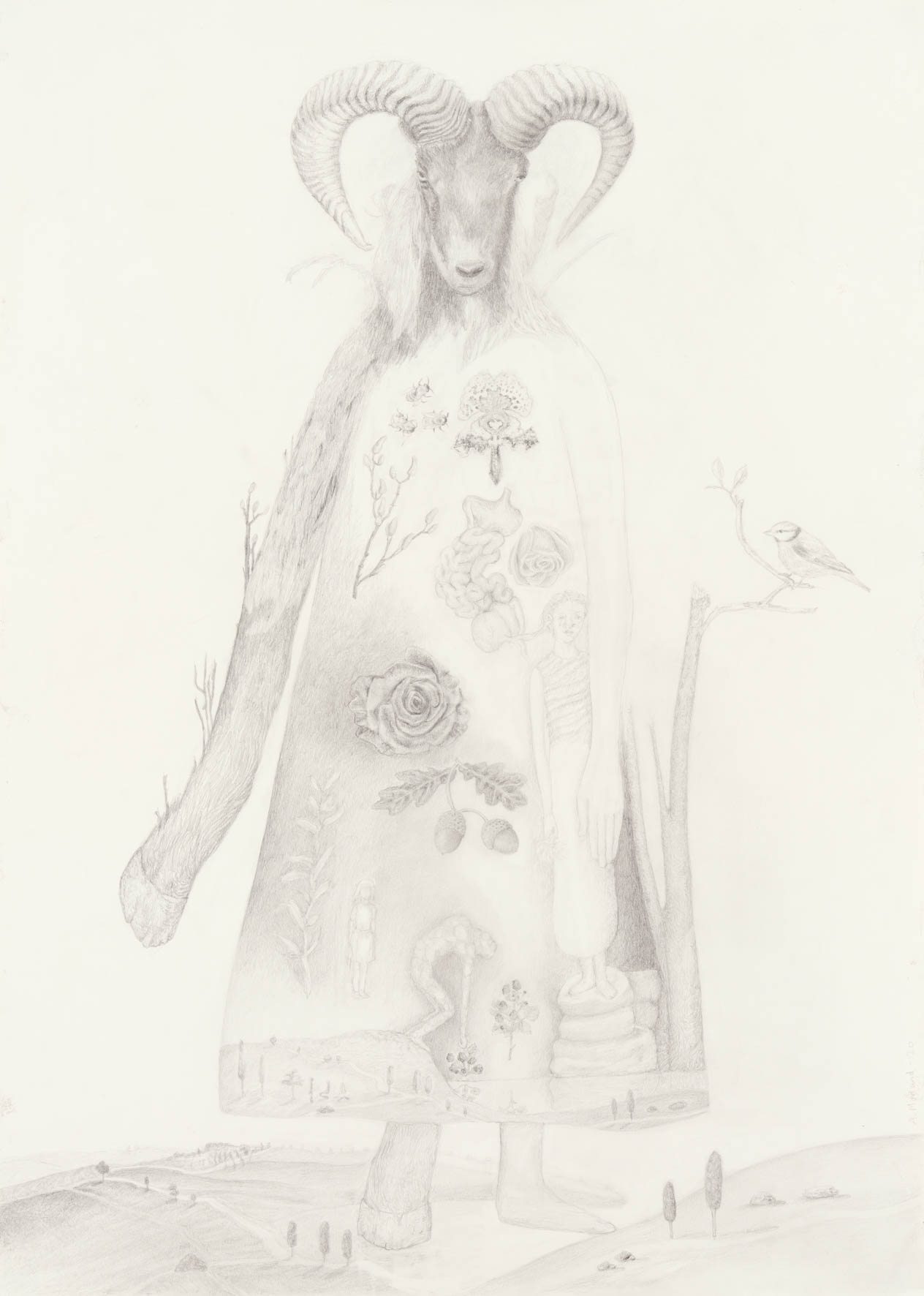“In Mørland’s art, people, animals, and plants merge together in hybrids that hark back to a primeval, mythical era. In these works, the various hybrids are not merely the sum total of other creatures that morph together and dissolve the one-dimensional picture, but rather create displacements that transcend space and time. This reminder is intensified by how nature is treated not as a set of reified objects outside of human existence but as an essential part of humanity’s psychological structures. This inseparable symbiosis manifests itself metaphorically in Mørland’s art, where bodies either branch off into the elements of nature or are incorporated into the landscape as its natural extension. In The Last Guardian, the buck’s head refers to an extinct species, with the buck standing watch over the last remnant of biodiversity as recorded in detailed depictions of plants and flowers that together resemble an herbarium. This meticulous account also alludes to the body’s inner organs, where the scientific gaze’s categorization and acquisition of knowledge of natural phenomena is transfigured into a subjective landscape. Paradoxically enough, it is precisely this rational control that is abolished in these hybrid figures, which challenge us to mirror ourselves in animals and plants as an essential part of our own subconscious or pre‑conscious nature. Considering how species are becoming extinct ever more rapidly, these themes in Mørland’s art raise a vital question. How does the mass extinction and destruction of animal habitats affect our own mental health and introspection? Are we capable of relating to animals with humility and respect as an essential part of ourselves, and of viewing ourselves as belonging to the ecological world that underlies our very existence? Mørland calls attention to the society-wide repression that smoulders beneath the surface of a rational, instrumental social order that places capitalism at its centre as an ideology, for an increasing exploitation of nature. Her shamanistic, inexplicable hybrid figures allude to a loss of not only animal species, of not only biodiversity, but also of a part of ourselves. And if dreams can be characterized as the habitat of repression, Mørland’s pictures depict a state where humanity is united with its fellow animals in a common hope of salvation. This concept manifests itself in the dress’s frieze, where we see people, trees, plants, and animals continuing to mutate and coalesce.“
Quote from Tone Lyngstad Nyaas
Wearing Apparel, Skira forlag 2021
